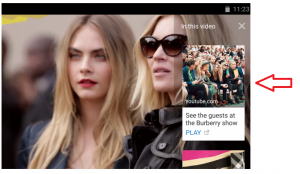AdWords is comparatively easy.
You’ve got key phrases. You’ve got short text ads. And that’s about it.
Contrast that to Facebook ads now, and the variables at play are daunting:
- A compelling value proposition
- Specific audience targeting
- Location and device placement methods
- Complex metric tracking
- Creating advertising congruency.
Not to mention the actual ad creative and image, which are arguably the most important aspects!
Fortunately, there are a few ‘universal truths’ that exist across advertising, conversions, and copywriting. These ‘universal truths’ can help you spot great ads from those that won’t deliver excellent results.
Here are seven surprisingly common Facebook ad mistakes (along with how to avoid them).
1. MobileShop.pk

Facebook’s carousel ads allow you to showcase different images to try and appeal to the broadest audience possible. Think of different, but related products for example. Or your most popular blog posts.
But you can also take this too far, as evidenced by this ad from MobileShop.pk. The problem isn’t the carousel choice per se, but the fact that they’re also trying to advertise multiple products within a single ad image.
In total, that pushes up the number of advertised products in this tiny space almost 3X. Generally speaking, providing people with too many options can be a recipe for conversion disaster.
2. Pathway Events

At first glance, this Pathway Events ad does a few things well. For example, the ad image piggybacks off celebrity. That’s a great way to generate interest and add credibility to your offer.
However, the ad falls down from there by highlighting a free lunch (which is good) but failing to explain why people should attend the free lunch (which is bad).
It looks like the supporting copy is about to go into that territory, but then it gets truncated because it’s too long for the space.
Tetrax Properties

This next ad from Tetrax Properties only makes sense after you’ve stared at it for a few moments and read the entire thing. Which most people don’t do online, because they’re busy scanning and skimming through photos from their friends and families.
Two ways to fix this:
- Use a captivating image, but make the point more obvious.
- Alter the wording from clever to clear and direct so that people immediately understand what’s “surprising”.
3. Food Lion

The new store updates at Food Lion look nice. But it’s hard to tell because of the fuzzy image with poor lighting. Authenticity is important in online ads, but this image could still use a more compelling image with higher quality.
The second mistake this ad suffers from is an unclear value proposition.
In other words: Why? Showcasing new store updates is important to consumers because…
Does it help people find things easier/faster? Does it Deliver a more pleasant and relaxing shopping experience?
The address towards the bottom is good, because it’s providing some call to action. However the content is too long and getting cut off a bit, and there’s no CTA button used or any other obvious action for people to take next.
4. Unomy

On the face of it, this Unomy ad is pretty good. The problem here though is what you don’t see.
The illustration matches the rest of the ad’s copy. Bringing together two seemingly unrelated ideas is one of the best ways to make messages ‘sticky’ and memorable, according to Made to Stick.
But when you look at the messaging from the landing page that this ad directs visitors to, they begin by talking about Moneyball (the popular book and movie).
There’s the compelling hook!
Linking your idea to baseball is good. But linking it to Moneyball — a popular idea, concept, and movie that everyone can relate to — is how you get it to jump off the screen and grab people’s attention.
5. Opennes at CEE

Once again, this ad initially looks good.
It features a great custom illustration. This is important because most people process visuals first (and much, much faster).
Images increase engagement by 94%, and it only takes 13 milliseconds for brains to process images.
It’s got the “Free eBook” plastered a few times, as well as the Microsoft seal of approval.
What’s missing?
How about: the point.
Only one small line — “Cloud Architectural Blueprints” — explains what the book is about. And defining what, exactly, that means is anyone’s best guess.
Jargon like this is lazy. It’s borderline meaningless, shows up on every competitor website, and doesn’t explain to people what they’re going to get out of it or why they should part with their personal information in order to download it.
There has also been studies that show something that’s “easy” or “simple” to understand are also seen as more likely to be seen as true.
For example, as crazy as it sounds, simple fonts are more believable than fancy or hard to read ones.
6. Temple ReadyCare

This ad is 99% of the way there.
They’re clearly targeting a specific audience. They have a good value prop along with a decent image. And the CTA is there too!
One thing to test?
Try A/B testing different ad variations that speak to common sports injuries.
For example, ACL tears would be at the top of the list. Especially when you target them specifically to (a) women who (b) play/like/is interested in basketball or soccer.
Why?
Studies have shown that women are more susceptible to these injuries than males, and they occur extremely frequently (unfortunately) in soccer and basketball (where one study says they account for up to 91% of season-ending injuries and 94% of injuries requiring surgery).
That level of detail in targeting audiences with specific messaging is what can elevate good ads to great ones.
7. Camden-Grey Essential Oils

This final ad is nearly perfect. Once again, all of the basic components are there, including a few pricing promotions to seal the deal.
However what trips up Camden-Grey is similar to what we saw in the first ad. Namely, too many options.
The most obvious thing that jumps out at you is the plethora of different images in the single image ad. You’re not sure exactly where to look, or what they’re promoting.
The next issue is all the various pricing and promotional tiers. While helpful, you’d probably be better off reserving a lot of that information on the landing or product page once people click. The primary goal of this ad isn’t to sell, but rather to get you to click.
The second aspect to test is to see which pricing promo works best. The $ 5 off one? Or the $ 13 one? Copy both ads and split test to find your answer. You can even run those two variations against the ‘control’ (this existing one) to see if there’s any material difference in conversions.
Conclusion
Facebook ads involve a ton of ‘variables’ that are difficult to align.
But the good news is that you can rely on many research studies that have been performed in other fields to help give you an idea of which areas you’re excelling in, and which ones you’re falling short.
The next article in this series will show the flip side, with great Facebook ad examples to follow and emulate.
Digital & Social Articles on Business 2 Community(86)







